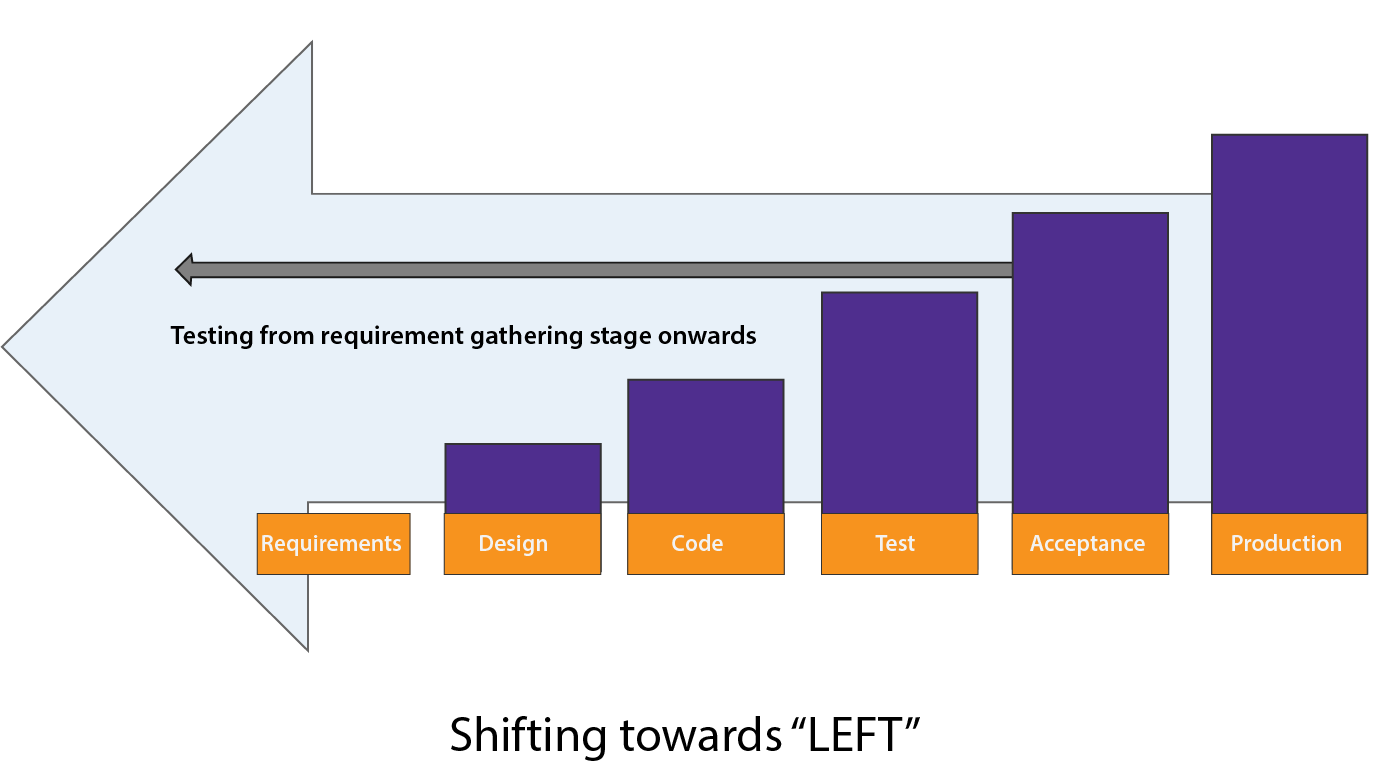
So basically, shift left in testing is a practice in software development where the testing team is bound to pay attention to quality, indulge in prevention instead of detection and initiate testing at an early stage than before. The intent of this testing model is to shorten the long testing cycle and eradicate the possibility of getting unwanted surprises at the end of the development cycle.There have been many cases when the mobile app is developed and deployed but there is some last minute knock at the door and the guest is the defect which proves to be quite expensive to get fixed at the end moment. This will prolong the app delivery time which is upsetting for both the parties mobile development company and also the client. Primarily let’s just explore the flow of development process and where is testing integrated.
1) System needs
2) Software needs
3) Project analysis
4) App designing
5) App coding
6) App testing
7) Operations
So, this is the hierarchy and this is where testing stands. The second last position, not much satisfactory, isn’t it? The concept is here since decades and it’s continuing. So, here what happens, project managers and clients will have a meeting where developers and designers would be a part of the discussion and understand the work flow. Testers are never in the planning and execution session, in fact, they are invited when all are done with their part of work. Well, iPhone and Android app development company need change and follow the concept of shift left in the above-mentioned hierarchy.
When testers are an integral part right from the planning and execution, he is in the know of what the new code is going to be, or how much easy or difficult it would be or what challenges can come in the way and how much time would precisely be needed to come up the challenges. There are no divergent ways to the fact that testing will be done when the all other processes are accomplished but the testing span will be short and quick with shift left approach. Shift left don’t push the testing above other factors, instead, it sprinkles it over each and every stage little bit.
Shift left: Is it innovative?
Back in the date, there were no specific testers. The one who builds the code would be the same to verify and test the code and the one who troubleshoots the same. With waterfall model, the need of an independent test team was aroused and integrated shortly. So, shift left is not innovative but its modifications in the existing ones.
Types of shift left testing?
There are basically four types of shift left mobile app testing followed in iPhone and Android app development: Traditional, Incremental, Agile/DevOps, and Model-based. Let’s check them individually.
1) The basic one is traditional testing which majorly pays attention to the unit and integration testing with modern test tools and API testing.
2) Incremental shift left testing bifurcates the complicated development down into minute pieces to let them test into smaller dimensions which are built upon one another. This is the most widely adopted shift left testing methodology.
3) Agile/DevOps shift left model is forbidden to developmental testing without including operational testing. This methodology performs testing in the various dash. This method is quite popular and on going modifications.
4) The last but not the least model based testing consists of executable needs, design models and architecture to cut down 45-65% of the bugs and issues discovered in the early phases. This approach is by far the most innovative one among all the other types.


 RSS Feed
RSS Feed
